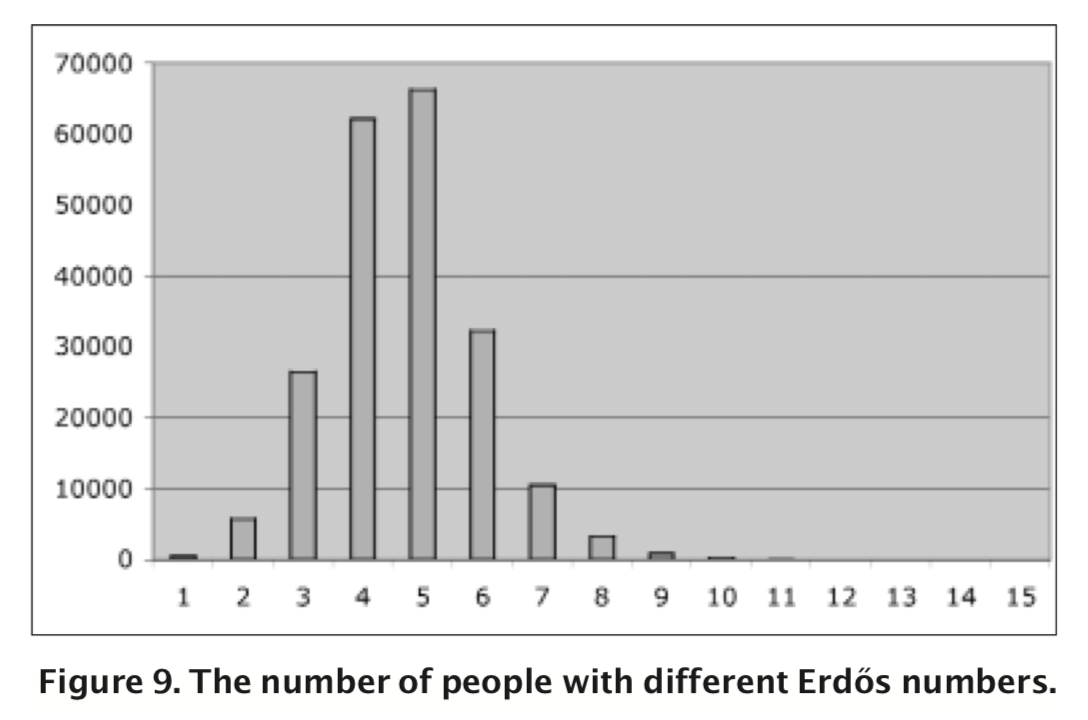• Mathoverflow has been studied as a "complex network" in Social achievement and centrality in MathOverflow, by L.V. Montoya, A. Ma, and R.J. Mondragón.
The analysis distinguishes degree centrality (based on the number of edges that a node has), betweenness centrality (which measures the fraction of geodesic paths that pass through a node), closeness centrality (the mean geodesic distance from a node to every other node), and eigenvector centrality (which measures how well connected a node is and how much direct influence it may have over other well connected nodes in the network). Three hypotheses that are tested (the first two pass, the third fails):
- A user’s reputation score is closely related to their degree centrality.
- The total number of views obtained by a user is related to their eigenvector centrality.
- The number of upvotes obtained by a user is related to their closeness centrality.
• MathSciNet has been used by Jerrold W. Grossman to analyze the network of collaborations among mathematics in Patterns of Collaboration in Mathematical Research: Apparently, the appropriate popular buzz phrase for mathematicians should be “eight degrees of separation”.
See also Patterns of Research in Mathematics by the same author.

